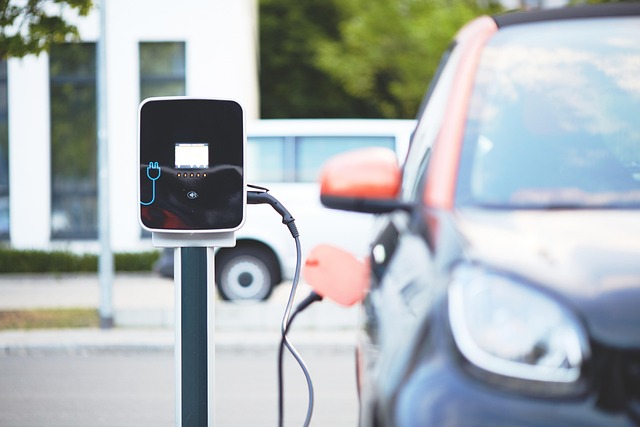Looking to register your car in California? This comprehensive guide breaks down the process step-by-step, from understanding key requirements to securing your license plate. We explore the importance of a valid VIN (Vehicle Identification Number) using a VIN verifier, essential documents needed, and whether to go online or in-person. Master the art of car registration in The Golden State with our expert tips.
- Understand California Car Registration Requirements
- Gather Necessary Documents for Vehicle Registration
- Use VIN Verifier to Ensure Validity of Your Vehicle
- Complete Online or In-Person Car Registration Process
- Pay Vehicle Registration Fees and Receive License Plate
Understand California Car Registration Requirements

Before registering your car in California, it’s essential to understand the state’s specific requirements. California requires all vehicles to be registered with the Department of Motor Vehicles (DMV) and titled through them. This process involves providing proof of ownership, insurance, and identifying information. Additionally, your vehicle must pass a safety inspection, known as a smog test, to ensure it meets environmental emission standards. The inspection is usually done at a certified repair shop or DMV station.
One crucial aspect unique to California is the use of a Vehicle Identification Number (VIN) verifier. This tool, often accessed through a mobile VIN verifier or even a simple online check, allows you to verify the vehicle’s history and ensure it has not been reported stolen. A valid VIN inspection is a critical component of the registration process, ensuring both safety and legal compliance.
Gather Necessary Documents for Vehicle Registration

Before you start the registration process for your vehicle in California, ensure you have all the essential documents ready. One crucial piece of paper is the Vehicle Identification Number (VIN) verification report. You can obtain this through a mobile VIN verifier or by conducting a VIN inspection yourself. This step is vital as it confirms the vehicle’s identity and history, which is critical for legal registration.
A mobile VIN verifier allows you to quickly and conveniently access a vehicle’s information using its unique VIN number. Alternatively, a VIN inspection can be done manually by cross-referencing data from various reliable sources. Having these documents ready streamlines the registration process and ensures a smooth experience at the California Department of Motor Vehicles (DMV).
Use VIN Verifier to Ensure Validity of Your Vehicle

Before proceeding with the registration process, it’s crucial to verify the validity of your vehicle using a reliable vin verifier. A VIN (Vehicle Identification Number) verifier acts as a critical tool in ensuring that the vehicle you intend to register is authentic and has not been reported stolen or had its identity tampered with. By utilizing advanced technology, these verifiers cross-check your vehicle’s unique VIN against authoritative databases, providing instant and accurate results.
One convenient option to consider is a mobile vin verifier, which allows for quick and easy verification right from the comfort of your smartphone. This modern approach streamlines the initial steps of car registration, making it more efficient for both individuals and car dealerships. With just a few simple steps, you can conduct a thorough mobile vin inspection to confirm your vehicle’s history and eligibility for California registration.
Complete Online or In-Person Car Registration Process

In California, registering your car involves either completing an online or in-person process. The first step is to gather all necessary documents, including your vehicle’s registration, proof of insurance, and identification. For a seamless experience, many opt for a mobile vin verifier or conduct a vin inspection online—this allows you to check your vehicle’s history and ensure there are no outstanding issues before initiating the registration.
Both methods have their benefits. Online registration is convenient and fast, while in-person visits offer more direct control over the process. During an in-person visit, you’ll need to present your documents at a California Department of Motor Vehicles (DMV) office. An agent will verify your information and, upon approval, issue your vehicle’s registration.
Pay Vehicle Registration Fees and Receive License Plate

After ensuring your vehicle meets all necessary requirements and completing the application process, it’s time to pay the registration fees. These fees vary based on your vehicle’s type, age, and emissions status. You can typically pay online or at a California Department of Motor Vehicles (DMV) office. Once your payment is processed, the DMV will issue you a set of license plates that correspond to your vehicle’s registration.
Before receiving your license plates, a crucial step involves verifying your vehicle’s VIN (Vehicle Identification Number). You can do this through a mobile vin verification service, which provides a quick and convenient way to confirm your vehicle’s details. This process ensures accuracy in the registration process and helps protect against potential issues in the future, such as theft or fraudulent registrations.
Registering a car in California involves understanding specific requirements, gathering essential documents, and completing either an online or in-person process. Using a VIN verifier ensures your vehicle’s validity, streamlining the registration experience. Once approved, you’ll pay relevant fees and receive your license plates, officially making your vehicle street-legal in the Golden State.
